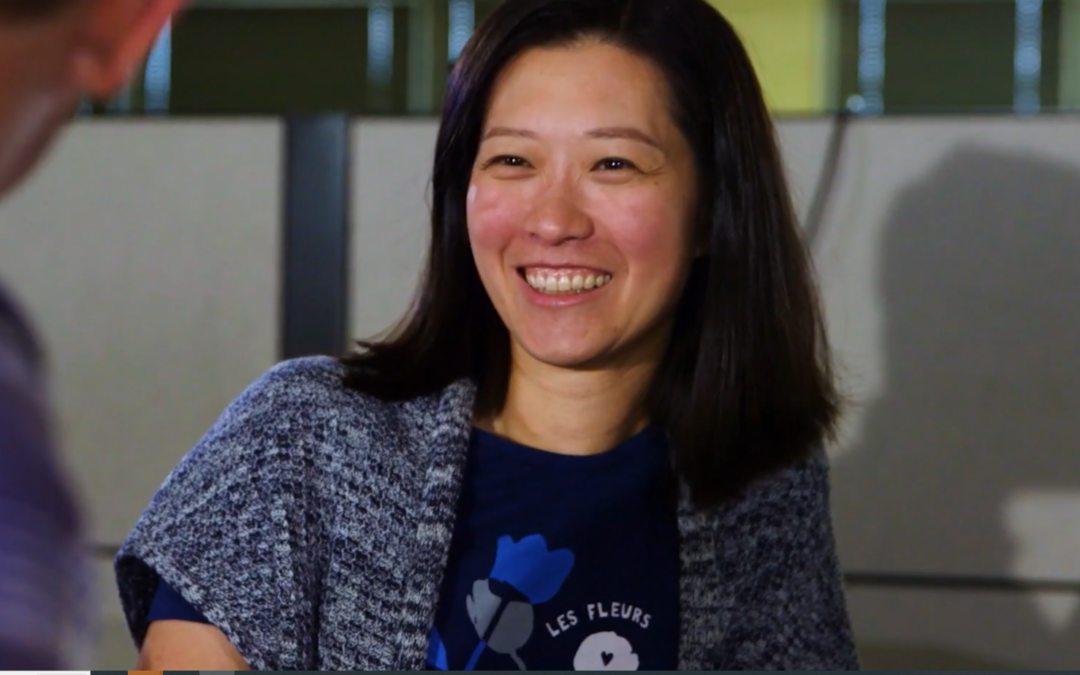For the past eight years, Joey Cheng has worked for ATC, a Wisconsin-based, regulated utility that moves energy along the electric power grid in parts of Wisconsin, Michigan, Minnesota, and Illinois. In her position, Cheng and her team assess the present and future needs of the electrical grid. They use electrical system models to analyze grid performance, develop network solutions, and determine the best value plan for interconnecting load and generation to ATC’s system.
Cheng has spent over 20 years working in the power industry. She has held various roles at ATC, including transmission planning engineer and team lead of substation services. She is currently the manager of system planning. Before starting her career in the power industry, Cheng studied at the National Taiwan Ocean University, earning a Bachelor of Science in electrical engineering. She continued her studies and earned a Master of Science in electrical engineering from the University of Wisconsin-Madison and a Master of Science in management from the University of Wisconsin-Green Bay.
“When I started my career, the electric industry was still heavily reliant on fossil fuels as the main electrical generation resource. But for the last several years, we’ve seen a transition to more renewable energy sources due to public policy changes and concerns over climate change. We are also seeing economic growth in our region that will require more energy and increase the load on our system.”
The electric power you use every day flows through a three-part system – generation, transmission, and distribution. Power plants, solar fields, wind farms, and other sources generate electricity that flows through high-voltage transmission power lines over long distances to substations where the voltage is lowered. The power then flows over smaller, local wires known as distribution lines to homes and businesses. The high-voltage power lines are like interstate highways and are a cornerstone of our nation’s electric power system.
Cheng explains that the transition from traditional generation sources (like coal) to renewable energy generation (like solar and wind) brings new needs and challenges to grid planning. She views this with excitement — a new challenge means a new opportunity. How the grid is built today helps ensure reliable energy for tomorrow.
“It’s like a puzzle, and because the issues are new, sometimes we don’t have all the pieces yet,” Cheng said, “But it’s the collaboration of other colleagues, our utility customers, and others in the industry that make it possible for us to interconnect new load and generation sources and strengthen the grid during this time. We can’t rely on just one person; it’s everybody having to contribute and collaborate.” Cheng shared that the collaborative culture at ATC is one of the reasons her team can keep up with the industry demand and remain flexible while planning.
Work like Cheng’s can help Wisconsin to better utilize current renewable energy resources by reducing electric grid constraints and keeping the power flowing. Currently, wind farms in eastern Iowa and southwest Wisconsin are not fully utilized. With more renewable energy projects coming online over the next decade, this challenge may continue unless electric grid infrastructure is expanded in the Upper Midwest, something that is necessary to support RENEW’s mission to advance renewable energy in Wisconsin.
And although electric grid system planning may not have the same public visibility as the release of a new cell phone, ATC’s behind-the-scenes work supports everyday life and is critical to society. While a phone connects us to the world around us, the electric grid powers our communities and keeps lights on in Wisconsin homes and businesses. Each ATC office is also involved in their local community. Cheng has been active in her community by participating in the De Pere Chamber of Commerce’s Art in the Park and cleanup of the Bay Beach Wildlife Sanctuary in Green Bay.
When Cheng thinks about system planning for the electric grid, she feels very motivated, explaining that ATC has provided her with various leadership and engineering opportunities to learn and grow alongside the industry. She says the technical work is challenging and intriguing at the same time, and the support and collaboration with her colleagues make the experience rewarding.
“Because the industry is changing, the environment is evolving. It’s important to keep up with the latest standards, the latest technology, and the latest trends in the industry. That’s what we’re trying to do at ATC in order to provide a safe and reliable pathway for power.”
When she isn’t working, Cheng loves reading, exercising, and traveling with her family. To her, work-life balance is essential.
“We all have very challenging work that requires a lot of focus and energy. As a manager, I make it a point to lead by example and take time to relax and recharge. I encourage my team to do the same. Work is important, but so is having a fulfilling life outside of work.”

